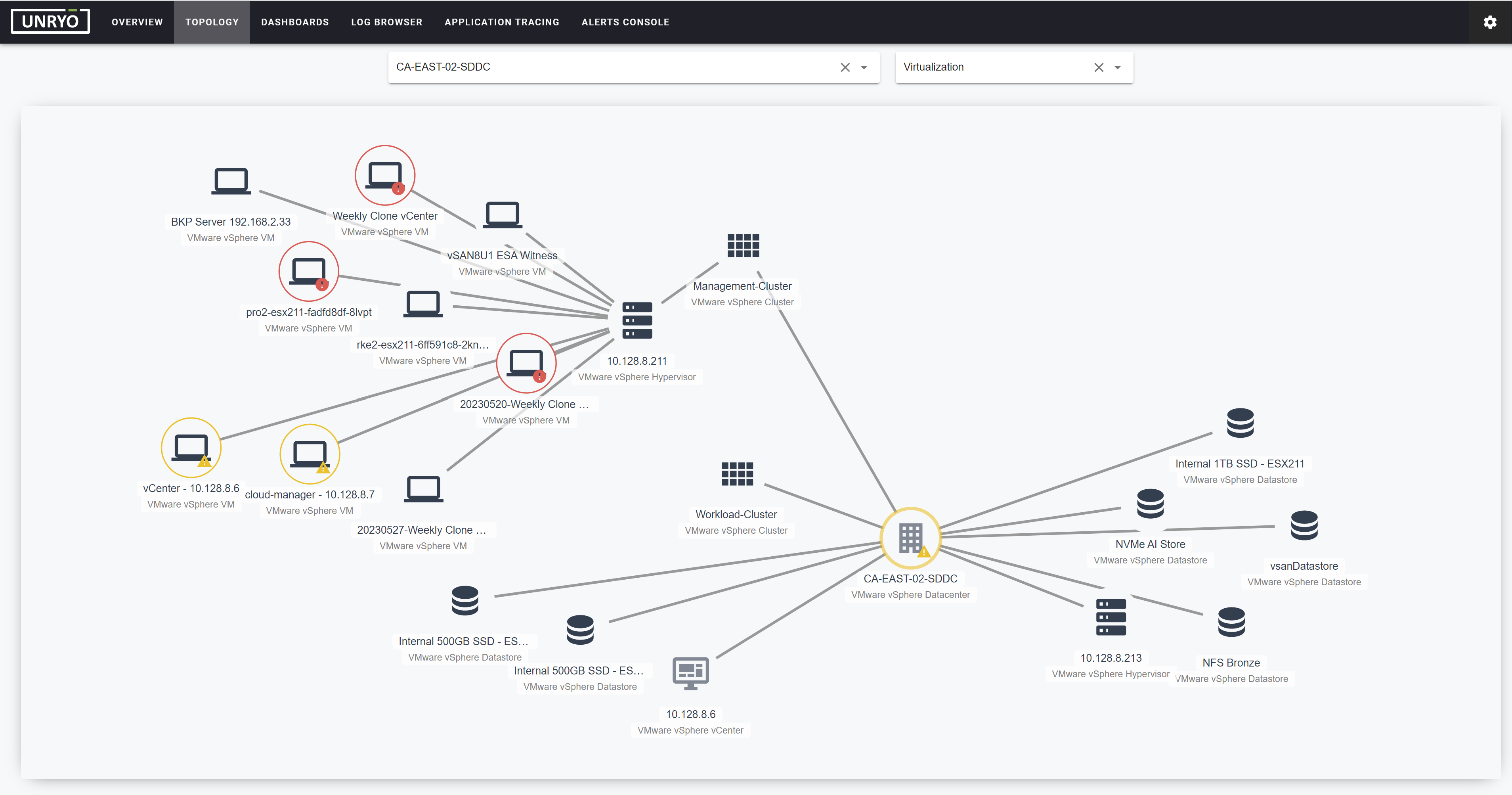About Topology#
The topology has two objectives:
- Accelerate issue resolution with intuitive maps, better context and dependencies across layers.
- Act as a data source for the Correlation Engine to identify root-causes and calculate impacts.

Concepts#
Nodes#
- A node - displayed as a circular icon - represents a physical or logical entity such as a network device, an IP network, a VLAN, a VM or a business service.
Edges#
- An edge (relation) - displayed as a line - connects two nodes. If multiple relations exists between two nodes, the map will draw one line per relation.
Layers#
- An edge is associated to a layer, such as Layer 2, IP Network, VLAN, Application, Business Services or a custom one. The map can display topology for a specific layer or combine multiple layers in a single view.
Topology API#
- With the Topology Data API and the list of Supported Data Sources, you can retrieve your own topology data into a consolidated view.
Topology Map#
- The Unryo Topology Map lets you visualize your infrastructure across multiple topology layers, with search, group and filter features.
How Unryo learns the Topology#
Dynamic Mapping from Live Data#
As live monitoring data points come in, Unryo learns the relationships to model the topology, keeping it continuously up-to-date. The result is a real-time, always trustable representation of the infrastructure, which is updated dynamically as the network evolves.
Teams visualize maps that are rendered on the fly, showing the exact real-time topology of the entire environment, both on-premise and in the cloud, and of business-critical applications.
External Topology Sources#
Unryo provides mechanisms to enable users to import their own data as the source for the topology. Unryo's topology model and map representation are open and extensible, capable of receiving and combining topology data from multiple sources.
Importing topology from external sources is optional. By default, when Unryo starts polling metrics from your infrastructure, the topology is instantly learned as the data comes in, and topology maps are automatically rendered. You will also get the physical and logical connectivity between network devices if you have activated the Unryo network discovery.